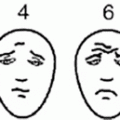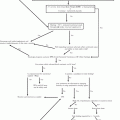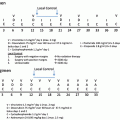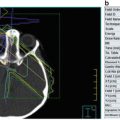Daniela Cristina Stefan and Carlos Rodriguez-Galindo (eds.)Pediatric Hematology-Oncology in Countries with Limited Resources2014A Practical Manual10.1007/978-1-4614-3891-5_3
© Springer Science+Business Media New York 2014
3. The Role of International Organizations on Collaboration for Global Pediatric Cancer Control
(1)
Union for International Cancer Control, Geneva, Switzerland
(2)
Department of Pediatric Oncology, Hacettepe University Cancer Institute, Ankara, Turkey
Abstract
The treatment of childhood cancer is an oncology success story—survival rates have increased dramatically from 25 % for those treated in the 1960s to 80 % for those treated during the current millennium. The big remaining problem is the issue of equity of access to diagnosis, treatment, and care of children with cancer around the globe. The 5-year relative survival rates, a usual comparative measure, while at 80–90 % depending on the cancer in question in high-income settings plummet to 10–20 % in some low- and middle-income countries, with many children dying without being diagnosed at all. This disparity cannot be permitted to continue. Urgent action at global level with a high level of international collaboration is key to uniting nongovernmental organizations (NGOs), international governmental organizations, cancer health care organizations, cooperative research organizations, and patient and family organizations in a concerted effort for true impact. There are lessons to be learned from current collaborative efforts to address childhood cancer and similar initiatives in child and adolescent health. A well-orchestrated global health partnership, with each of the partners having a defined role, has the potential to harness the expertise and proven tools we have now to close the divide in access to diagnosis, treatment, and care to make a significant contribution to the fight against pediatric cancer.
Introduction
Despite great progress achieved in improving the survival of children with cancer in developed countries, for the estimated 175,000 newly diagnosed children with cancer and their families in resource-limited settings, the big problem remains the issue of equity of access to diagnosis, treatment, and care of children with cancer [1]. A low survival rate of 10–20 % in some low- and middle-income countries adds to the high number of children who die without being diagnosed at all. In addition 80 % of the 90,000 deaths annually to childhood cancer occur in low- and middle-income settings [2].
In this context many international organizations around the world decided to join forces together to reduce the disparity between HIC and LMIC and improve the survival rate of children diagnosed with cancer. Along the history, the international collaboration based on trust and respect showed the fruitful results of creating partnerships between organizations with the same principles and goals. The defined role of each partner had the potential to contribute in closing the divide in access to diagnosis, treatment, and care and make a significant contribution in the fight against the childhood cancer worldwide [3].
International collaboration on the management of pediatric cancers was initiated in Western Europe and North America and grew from coordinated clinical trials at national level. Large collaborative groups networking across these regions facilitated testing and validation of protocols to establish standards of care and improved and new treatment protocols which have given us these incremental improvements in patient outcomes over past decades. National Wilms tumor study is a good example of the collaboration in early years [4]. Although there are examples of international collaboration reaching out to include sites in other regions of the globe and also to adapt established treatment protocols to make them feasible in low resource settings, these lack in both coverage and scope. Local champions are often fighting to establish childhood cancer units, achieve adequate financing and personnel levels, and battle with lack of continuity in access to even some of the cheapest medicines and technologies on a routine basis.
World Cancer Declaration as a Global Tool for Cancer Control
Launched in 2008 by the Union for International Cancer Control (UICC), the World Cancer Declaration is a tool to help bring the growing cancer crisis to the attention of government leaders, health policymakers, and the general public alike. The Declaration outlines 11 aspirational targets and priority actions which together can lead to a reduction in cancer incidence, improved survival, and quality of life for those living with a cancer diagnosis. Other than the risk factor targets, each of them is very much relevant to pediatric cancer, thus providing a framework for decision makers [5].
Despite the clear call to action of the World Cancer Declaration, cancer control advocates were not getting the political attention required to make sustained change at country level. In 2009, UICC took the World Cancer Declaration targets and principles forward to form the basis of a united call to action on noncommunicable diseases (NCDs). The NCD alliance was founded by UICC together with the leading global federations World Heart Federation and International Diabetes Federation and joined 1 year later by the International Union Against Tuberculosis and Lung Disease [6]. NCD alliance unites over 2,000 civil society member organizations from 170 countries through a vision of a future free from preventable suffering and death caused by NCDs. This NCDA global movement has contributed to a shift in global health and development thinking by leveraging a UN High-Level Meeting on NCDs, only the second time in history that Heads of State have engaged at this level on a health topic, bringing world attention to the global NCD epidemic. This NCD movement has influenced governments to commit to unprecedented action and accountability [6–8] and position NCDs as a priority for the successor goals to the current Millennium Development Goals (MDGs), the so-called Post-2015 agenda.
The focus of the global commitments to health promotion, risk factors for cancer and other NCDs, early detection through improved primary care services, and improved access to diagnosis and treatment opens up unprecedented opportunities and political support for cancer control efforts. The “Political Declaration of the High-Level Meeting of the General Assembly on the Prevention and Control of Non-communicable Diseases (NCD)” also calls for whole of government and pan-UN approaches to global health partnerships. Childhood cancer advocates must grasp this opportunity and demonstrate that civil society is ready and prepared to take on a leadership role in such a global health partnership for childhood cancer.
Building on Past Success: Examples of Civil Society Initiatives
UICC and Sanofi Espoir Foundation: My Child Matters Partnership
The My Child Matters partnership was initiated in 2005 by the Sanofi Espoir Foundation and the UICC targeting sustained improvement in awareness, access to diagnosis, and care and childhood cancer survival in developing countries [9–12]. Childhood cancers are mostly curable if they are diagnosed early, properly managed with the right treatment and according to the appropriate protocol. In the period 2006–2012, the partnership invested more than five million Euro and invested in 40 projects in 26 countries. In addition to the financial support, My Child Matters sites benefited from expert advice from a steering committee of the leading and diverse professional organizations in the pediatric oncology field representing both a wide geography and a diversity of discipline ranging from epidemiology and cancer registry through to clinic and public health policy and advocacy. In addition, the sites worked in close collaboration with an assigned individual mentor. Key factors of success in the early projects were (1) improved infrastructure and equipment, (2) targeted training of hospital personnel, (3) focused efforts on building a strong referral network and raising awareness in the catchment community, and (4) focused efforts to work with patients and their families to address the issue of abandonment of treatment. A renewed commitment was announced in 2013 focusing on projects such as early detection as a critical factor in the outcome for patients. One 2013 awardee is WHO/PAHO contributing to their regional efforts to validate and implement the “Module for Early Detection of Childhood Cancers” into the established “Integrated Management of Childhood Cancer” (IMCI) strategy. The module was successfully tested in Brazil and the My Child Matters support will accelerate further validation in four countries. UICC is prepared to work with PAHO to translate this validated model and encourage other WHO regions to adapt and introduce this approach.
Stay updated, free articles. Join our Telegram channel

Full access? Get Clinical Tree







